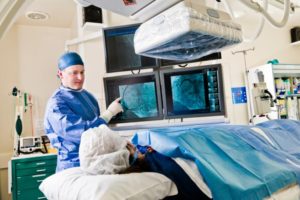X-ray Markers, otherwise called: anatomical side markers, Pb markers, lead markers, x-ray lead markers, or radiographic film recognizable proof markers, are used to stamp x-ray movies, both in doctor’s facilities and in mechanical working environments, (for example, on plane parts and engines). They are used on radiographic pictures to decide anatomical side of body, date of the methodology, and may incorporate patient’s name.
Most X-ray markers with initials comprise of a privilege and a left letter with the radiographer’s initials. There are additionally accessible markers to show situating of the body e.g. prostrate, or as to time when performing systems, for example, an Intravenous pyelogram. The x ray Markers with initials are very useful in many ways. It has been proposed that radiographic markers are a potential fomite for tactless microscopic organisms, for example, MRSA, and that they ought to be cleaned all the time; this, be that as it may, is not generally done.
Some X-ray markers are made with toon pictures or sparkle included on the markers. This style marker, known as mapmakers, demonstrates right or left side and incorporates technologists’ initials. All the more essentially a cheap substance, Handi-Tak is used to hold these markers to the X-ray plate during imaging. This Tacky tape should be cleaned amongst uses and disposed of when obviously soiled.
When looking for x ray Markers with initials, it is important to look at all the aspects related to it. There are a lot of lead markers available today, and they’re not an entangled bit of hardware. All it truly is a lead letter encased in a material that is undetectable in an x-ray machine. In any case, these seemingly insignificant details are vital to numerous radiography divisions and focuses.
At Magic X-Ray Marker, we provide a wide range of markers at the best rates. You can even customize it like the way you want. We are a hotspot for X-Ray Lead Markers including Aluminum and Plastic X-Ray Markers. We offer a substantial choice of sizes, shapes and colors including full units and in addition singular X-Ray Marker sets. Tweak your X-Ray Markers with your initials on generally things.
Our lead markers are altogether made in-house utilizing quality plastic or potentially aluminum housings to guarantee life span and sublime quality. We can modify your markers to incorporate your company or division’s initials, and the greater part of our requests delivers within a few business days.
